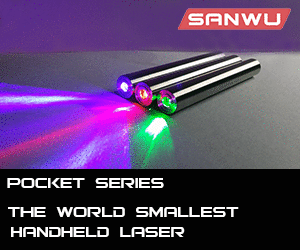Proton
New member
- Joined
- Jun 13, 2019
- Messages
- 12
- Points
- 3
I have a blue laser with a power of about 1W. I have a youtube channel where I mainly make chemistry related videos but I wanna expand to lasers and whatnot as well. I want to do some cool experiments but I am pretty new to lasers. I am going to attempt to levitate particles with it but other than that I cant think of too many experiments I could do that i could make a video (at least 3 mins) out of. Any ideas?



